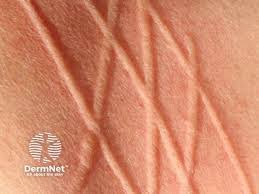Fully 30% of adult chronic inducible urticaria (CIndU) patients achieved a complete response after four weeks of dosing with EVO756, a potent, highly selective oral small molecule antagonist of mas-related G-protein coupled receptor X2 (MRGPRX2). Of these patients, 50% were IgE high (≥100 IU/ml), according to top-line data from a Phase 2 trial.
Evommune’s EVO756 is being developed as a potential first-in-class, best-in-class oral treatment for chronic inflammatory diseases, including CSU and atopic dermatitis (AD), with additional possible applications in neuroinflammation.
Multi-Center Trial
The multi-center trial evaluated the safety and efficacy of EVO756 in 30 patients with symptomatic dermographism, the most common form of CIndU. Enrollment targeted a real-world cross-section of patients with both IgE high (≥100 IU/ml) and low at baseline. Efficacy endpoints included changes from baseline in provocation test scores and pruritus. EVO756 was administered orally for four weeks at either 300mg once daily (QD) or 50mg twice daily (BID) and was evaluated for safety and efficacy at weekly visits during treatment, with patients serving as their own control.
In the trial, clinically meaningful responses to treatment with EVO756 were consistent in both the 300mg QD and 50mg BID treatment groups, and EVO756 was generally well-tolerated with no serious treatment-emergent adverse events (TEAEs) and no discontinuations due to adverse events.
The full dataset is expected to be presented at an upcoming medical meeting in the second half of 2025.
“As one who treats urticaria, these results suggest that EVO756, if approved, could present a compelling alternative to biologics, especially when we expect continued improvement and more responses with treatment beyond four weeks,” says Clinical Investigator Edward (Ted) Lain, MD, MBA, a Dermatologist in Austin, TX, in a news release. “There is a tremendous need for a medicine that could offer patients an effective treatment option along with the convenience of oral dosing, rapid itch reduction, and a favorable safety profile.
PHOTO CREDIT: DermNet


